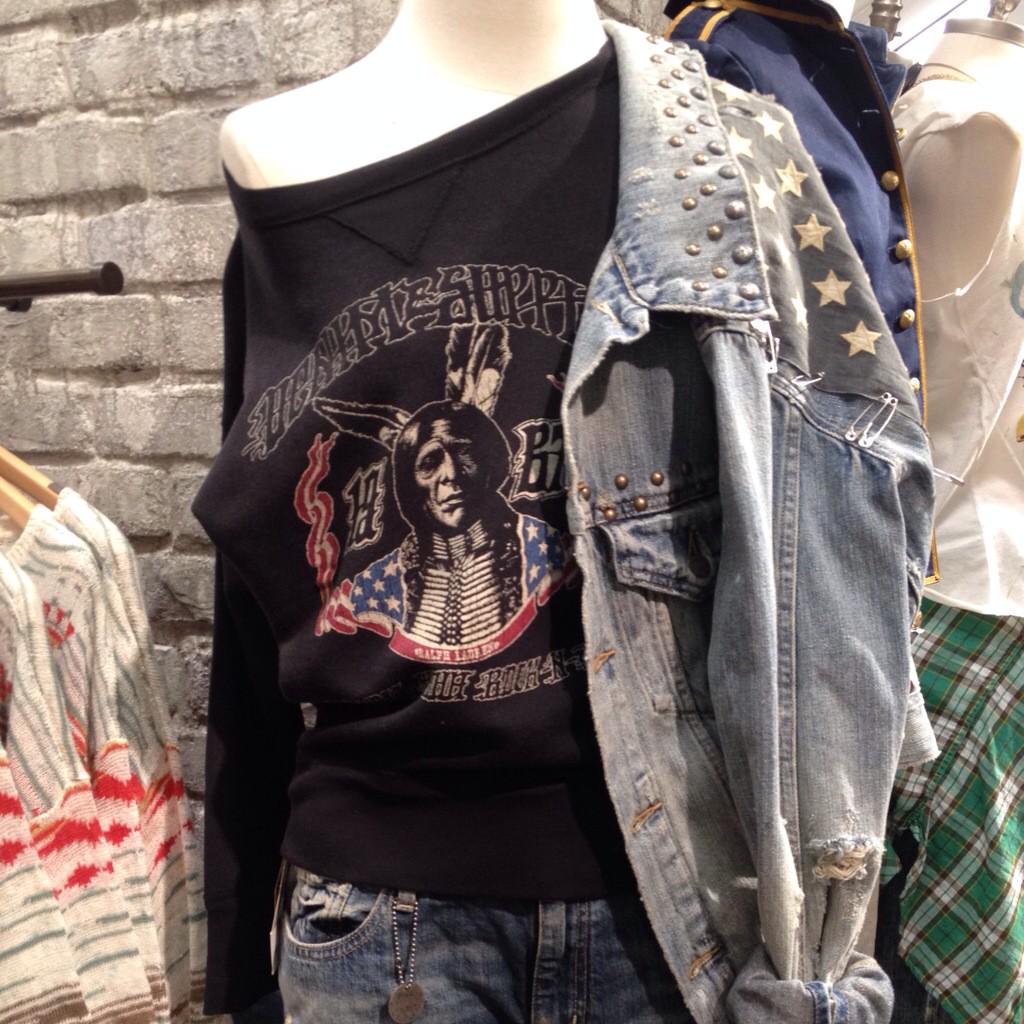By Ruth Hopkins
Old portraits of Native men from the Allotment and Assimilation Era (1887–1943) are displayed like cover models among Ralph Lauren’s latest line for the 2014 Holiday season. I did a double take for an instant, because one of the men pictured looked like my ancestor.
Hopkins explains what's wrong with this:
What many people alive today fail to realize is Natives of the Assimilation Era wore western clothes because they were forced to do so. We were hunted by cavalry soldiers and made to give up our freedom and live on reservations. Our culture and language was ripped from us. Our ceremonies and religious practices were declared illegal. My own father and uncles, who were torn from their mother’s embrace and put in boarding school, were mercilessly beaten for speaking their Native tongue. They didn’t want to wear itchy woolen vests and tight narrow shoes made for white children. They had no choice. The fashion Ralph Lauren glorifies arose from oppression.
Keene: Dear Ralph Lauren, Our Ancestors Are Not Your Props!
By Dr. Adrienne Keene
We become commodities—objects that can be bought and sold. I mean, the heading of this page says “featured stock,” referring to the clothing, but when there are images of Native people right next to the $265 headdress t-shirt, it’s hard to separate the people from the products. Additionally, when the word is “stock,” one can’t help but think of animals (or slaves) for sale.
There’s also this piece that I can’t quite put my finger on, and don’t know if I can adequately express. The photos are all men in (mostly) western clothing, with “tribal” accents here and there. I feel like there is a subtext here of “civilizing”—even the “wild Indians” can look dignified in these clothes. You can have your Americana aesthetic without the savage overtones! It just reminds me of the "Tom Torlino—Navajo" photograph, which is representative of the cultural genocide of government boarding schools.
Finally, there is the economic piece at play here. Look at the prices. A $265 T-shirt featuring a sacred headdress, a $1,300 plaid coat, $400 sweaters—and all of this money is going straight to building Lauren’s personal wealth and empire, none of it is going to the communities he is directly exploiting to sell his product. How American of him: seeing Natives as inherently disposable and exploitable, and using Native resources to build his personal wealth, while simultaneously yearning for the romanticized past when Natives roamed the plains, and ignoring his own complicity in the ongoing settler colonial project. Pretty much the story of the United States.
Ralph Lauren backs off
Ralph Lauren apologizes for Native American ads
By Sarah LeTrent
Now, the company is apologizing for the imagery and has since removed the images from its website.
"Ralph Lauren has a longstanding history in celebrating the rich history, importance and beauty of our country's Native American heritage," the company said in a statement. "We recognize that some of the images depicted in the RRL look book may have caused offense and we have removed them from our website."
Ruth Hopkins, a contributor to the site Last Real Indians, took issue with the campaign's use of Native Americans, claiming that the imagery is not only ignorant, it's a harsh reminder of a time of extreme oppression, and even genocide, for the nation's indigenous people.
By Celine Cooper
Thankfully, Ralph Lauren, that doyen of classic Americana, was immediately met with an online campaign against the company’s questionable “assimilation aesthetic.” (You can read the outrage on the Twitter hashtag #BoycottRalphLauren).
The online activism worked. On Friday, the company took down the images. Although they didn’t offer an actual apology, they did release the following statement: “We recognize that some of the images depicted in the RRL look book may have caused offense and we have removed them from our website.”
Offence, indeed. Here’s the thing. What Ralph Lauren wants to sell is not the actual history of America, but an idea about America, a certain nostalgia and patriotism. Their ads were meant to evoke a pioneering spirit; the outpost, the frontier where natives were tamed and the Wild West was won. Cowboys and Indians. Classic Americana, that.
Ralph Lauren is one of those repeat offenders of cultural appropriation. Stumbled upon this gross stuff in Feb.

And Indians from that era who weren't modeling Ralph Lauren:
Yes, He's Handsome--But He's Not Your Model. 25 Photos of Natives in European Dress
The stereotype here is that Indians were willing participants in a 19th-century fashion revolution. That they would've sat and posed for pictures to help Ralph Lauren sell its goods.
For more on the subject, see Ralph Lauren's Fetishistic Native Collection.
No comments:
Post a Comment